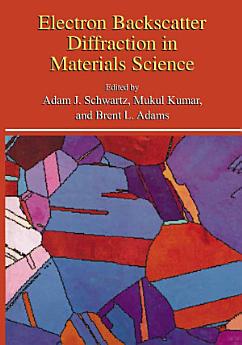Electron Backscatter Diffraction in Materials Science
Adam J. Schwartz · Mukul Kumar · Brent L. Adams · David P. Field
2013년 6월 · Springer Science & Business Media
eBook
339
페이지
report검증되지 않은 평점과 리뷰입니다. 자세히 알아보기
eBook 정보
Crystallographic texture or preferred orientation has long been known to strongly influence material properties. Historically, the means of obtaining such texture data has been though the use of x-ray or neutron diffraction for bulk texture measurements, or transmission electron microscopy or electron channeling for local crystallographic information. In recent years, we have seen the emergence of a new characterization technique for probing the microtexture of materials. This advance has come about primarily through the automated indexing of electron backscatter diffraction (EBSD) patterns. The first commercially available system was introduced in 1994, and since then of sales worldwide has been dramatic. This has accompanied widening the growth applicability in materials scienceproblems such as microtexture, phase identification, grain boundary character distribution, deformation microstructures, etc. and is evidence that this technique can, in some cases, replace more time-consuming transmission electron microscope (TEM) or x-ray diffraction investigations. The benefits lie in the fact that the spatial resolution on new field emission scanning electron microscopes (SEM) can approach 50 nm, but spatial extent can be as large a centimeter or greater with a computer controlled stage and montagingofthe images. Additional benefits include the relative ease and low costofattaching EBSD hardware to new or existing SEMs. Electron backscatter diffraction is also known as backscatter Kikuchi diffraction (BKD), or electron backscatter pattern technique (EBSP). Commercial names for the automation include Orientation Imaging Microscopy (OIMTM) and Automated Crystal Orientation Mapping (ACOM).
이 eBook 평가
의견을 알려주세요.
읽기 정보
스마트폰 및 태블릿
노트북 및 컴퓨터
컴퓨터의 웹브라우저를 사용하여 Google Play에서 구매한 오디오북을 들을 수 있습니다.
eReader 및 기타 기기
Kobo eReader 등의 eBook 리더기에서 읽으려면 파일을 다운로드하여 기기로 전송해야 합니다. 지원되는 eBook 리더기로 파일을 전송하려면 고객센터에서 자세한 안내를 따르세요.





